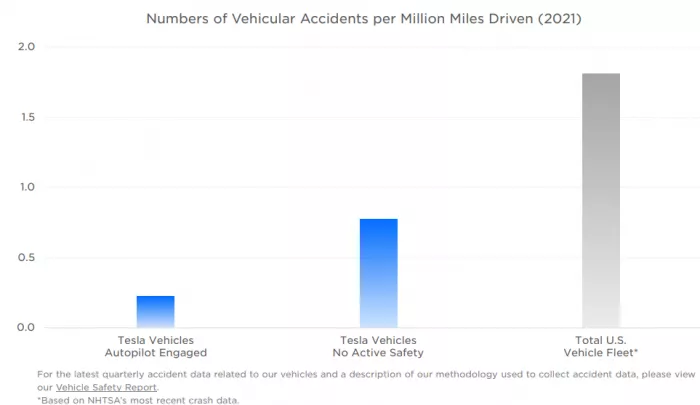
In terms of active safety, Tesla also directly names competing products and compares them with each other:

Not long ago, a major accident occurred in Beijing in which Tesla owners mistakenly stepped on acceleration, resulting in a continuous collision of four cars at a speed of 170 kilometers per hour. At first, the owners said "brake failure" and later admitted their mistakes.
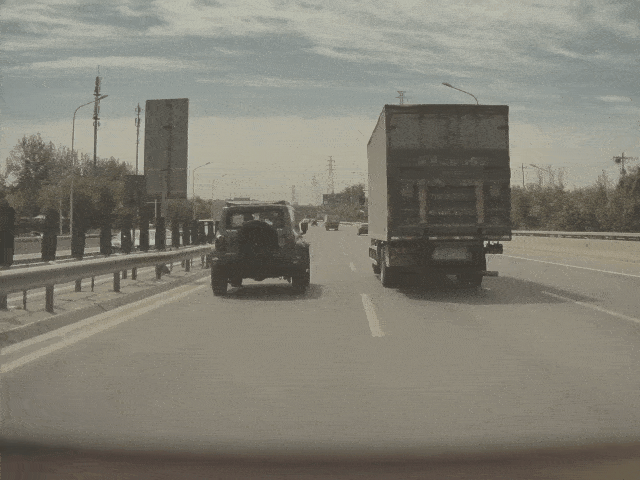
Tesla also disclosed the active safety measures for such human errors for the first time in this report
In addition, tanker fans criticized the fire problem of trams. Tesla also showed data to prove that the fire probability of its products is 11 times lower than that of traditional cars:

Where is Tesla's conclusion drawn? How is Tesla's explanation different from that of traditional car companies for the definition of vehicle safety?
Autopilot is eight times stronger than humans. Where is it?
The so-called "eight times stronger" is based on the latest statistics of NHTSA (National Highway Traffic Safety Administration) in 2021.
The first is the average mileage of an accident when autopilot is activated.
Then there is the average mileage of Tesla owners who do not use autopilot to record an accident, and the horizontal comparison with the same data of NHTSA in the United States.
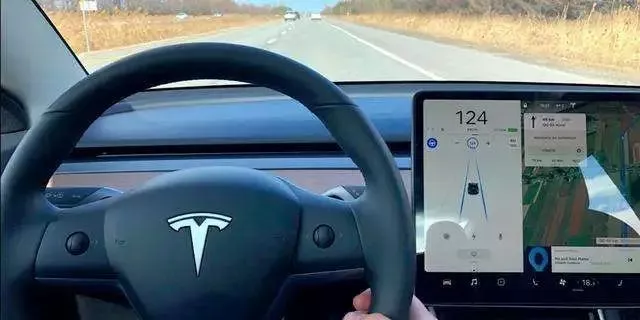
Tesla said that when autopilot (including automatic assisted driving and active safety functions) is activated, an accident is recorded every 4.54 million miles (7.26 million kilometers).
Tesla owners who do not turn on autopilot and turn off the active safety function have an average accident every 1.3 million miles (2.08 million kilometers).
Also in 2021, NHTSA recorded an average traffic accident every 550000 miles (880000 kilometers) in the United States.
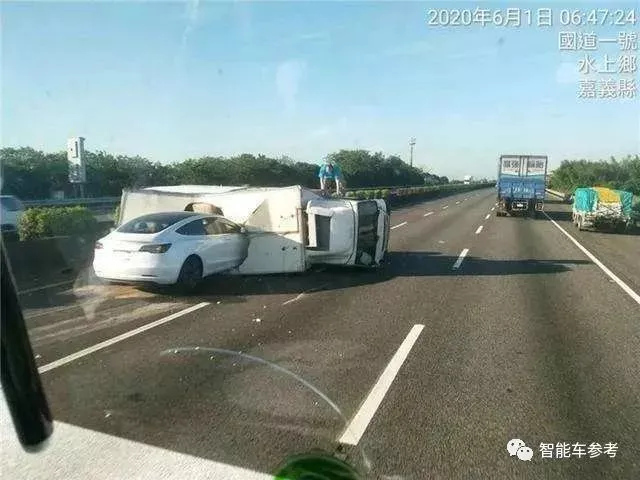
The so-called eight times is obtained by comparing the Tesla autopilot with the average accident rate in the United States.
The statistical object does not include FSD, which is still the autopilot of auxiliary driving level in essence. Moreover, Tesla also believes that the statistical results are conservative.
Tesla claims to be rigorous. Accidents in which automatic driving is disabled within 5 seconds before each impact, as well as accidents in which airbags pop up, are counted, even if they are not responsible for rear end accidents.
Nhsta's accident statistics never include minor accidents, and Tesla believes that at least half of the accidents are missing.
In other words, the molecules can actually be larger, and the reliability of autopilot may be far more than 8 times higher than the average in the United States.

Where does such data come from? Tesla explained it from three aspects.
The first is the active safety function of the vehicle itself, such as automatic emergency braking, lane departure warning, front and side collision warning, obstacle recognition and so on.
AEB, ACC and collision warning are familiar to us, but Tesla disclosed a unique active safety function for the first time:
*Remedy mechanism for pedal MIS stepping *.
If the camera recognizes that there is an obstacle close to the front, and the driver quickly and deeply steps on the accelerator pedal at this time, the system will judge it as stepping on by mistake, and then instantly cut off the torque output of the motor to ensure safety.
Tesla says this feature can prevent hundreds of accidents every month.
Tesla's so-called "brake failure" accidents may also be reduced accordingly.
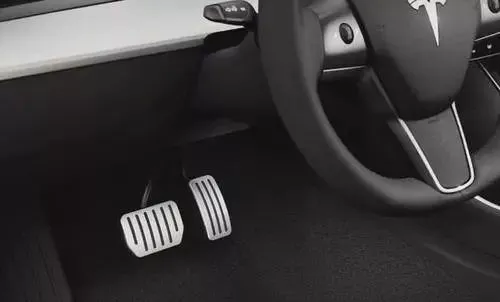
Behind the active security function is the data-driven function iteration emphasized by Tesla
At present, more than 2 million vehicles running on the road around the world continue to return measured data, which is much larger than any automatic driving company.
This also enables Tesla to find complex scenes that are difficult to cover in ordinary automatic driving tests, regulations and standards, so as to give targeted solutions.
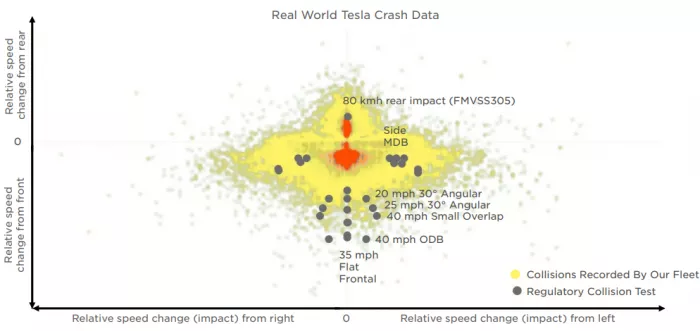
After enough data is accumulated, the autopilot system improves the accuracy of accident prediction , which can tighten the safety belt in advance and trigger the airbag before the collision.
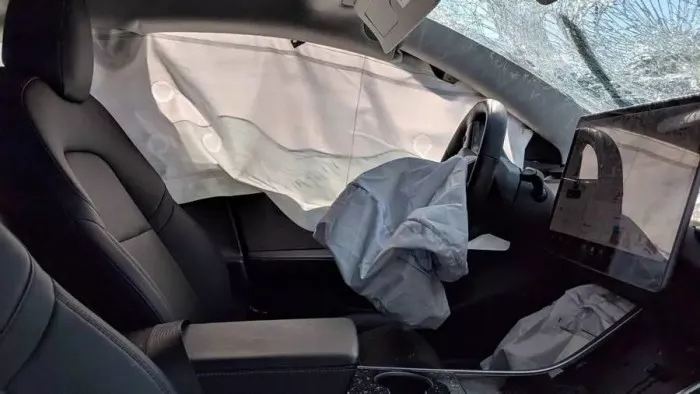
Finally, Tesla also listed passive safety data. For example, the lower center of gravity of the body without a front engine makes Tesla more like a fuel car with a mid engine.
This not only increases the overall flexibility and handling of the vehicle, but also minimizes the rotational kinetic energy in the horizontal axis and improves the stability of the vehicle body.
In addition, on the body structure, Tesla has also made specific enhancements for common collision types**
As for the effect, Tesla said that model 3 and model y achieved 5 stars in all usncap categories:

What else did Tesla emphasize about vehicle safety
With regard to security, Tesla not only listed three-party data proof, but also used this report to explain some of its own understanding.
For example, Tesla caused controversy before because of the airbag problem. This time, Tesla specifically explained why the airbag did not pop up in some accidents.
For example, in such a common "lateral overlap" collision accident, the previous sensor design can only detect forward collision, and the perception of lateral collision is insufficient.

Therefore, Tesla improved the layout position and type of airbag sensors in the later stage, so that Tesla can detect almost all types of collisions.
In terms of battery safety, in the past, oil truck fans often criticized that trams are easy to catch fire and spontaneous combustion, which has become a hidden danger to persuade many users over time.
However, Tesla's data in the report proves that although fire accidents cannot be completely avoided, compared with the comprehensive data of all cars in the United States, Tesla's fire accident rate per 1 billion miles is 11 times lower:

In addition, Tesla also stressed the effectiveness of its security configuration.
With the same active security configuration, Tesla gives users better practical protection.
Take AEB as an example. Now almost all cars are equipped as standard, but the sensor range and underlying computing power are very different.
Tesla's active safety function consists of eight cameras, a neural network and complex electromechanical systems to ensure reliability. AEB performance is more than 45% better than the common vision + radar fusion scheme.
In the tests of IIHS (American Highway Safety Insurance Association), Euro NCAP (European new vehicle safety evaluation organization), Ancap (Australian new vehicle safety evaluation organization) and other tripartite organizations, they have received very high scores.

To sum up, Tesla officials want to explain that their models pay attention to safety, reasonable design and material conscience.
However, what Tesla didn't say is that car owners continue to contribute road data. Each accident enriches Tesla's database. In fact, they are Tesla's volunteer road testers and safety experiment materials
So, is today's Tesla autopilot safer than yesterday?
Foreign media insideevs made detailed statistics.
All data are from Tesla's official statistics. The data means that an accident is reported every XX miles, so of course, the higher the point in the y-axis direction, the better the performance.
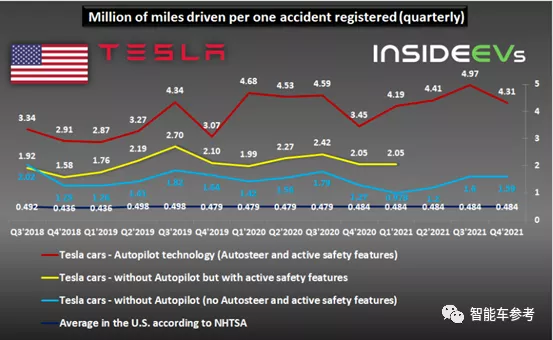
You should have an answer to whether autopilot is reliable or has made progress.
There have always been disputes about Tesla's safety, whether it is spontaneous combustion, automatic driving, braking... As long as there is an accident, Chinese and foreign public opinion will inevitably pay special attention to it, dividing the fierce confrontation between the black faction and the support faction.
The views of both parties are very simple and direct, which is nothing more than "cutting leeks for unsafe car owners" and "touching porcelain for really safe car owners"
What do Tesla officials think?
In this report, there are thought-provoking statements:

Tesla said that in order to attract attention, the media usually only reported the tram fire, and never mentioned the fire and Spontaneous Combustion Accident of traditional fuel vehicles.
In fact, in February, musk himself sent three twitter roast complaining about the "double standard" of public opinion towards Tesla:
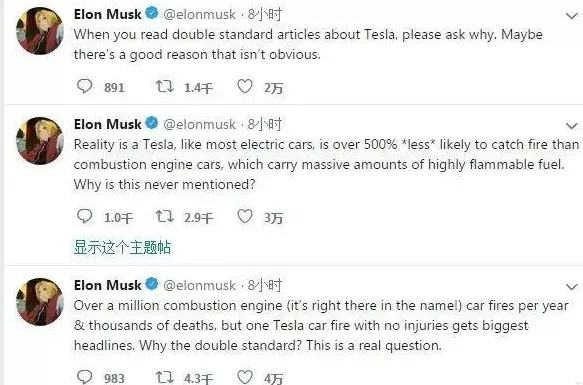
"Every year, more than 1 million gasoline vehicles have fires, causing thousands of deaths, but none of them has made headlines like Tesla's fire. Why double standards? It's a question."
Do you think musk is excusing Tesla from the hidden danger of the accident, or is public opinion really unfair?
One more thing
Tesla report also disclosed the work and treatment.
Tesla received more than 3 million job application resumes in 2021. According to the survey of universum in 2021, Tesla and SpaceX ranked among the top two favorite work units for science and engineering graduates in North America.
So what about the treatment given by Tesla?
Tesla did not disclose the specific number of wages, but introduced the stock based employee compensation system.

Assuming that an employee received 320 Tesla shares in 2018, he can sell 20 shares for cash every quarter for 16 quarters (4 years).
The actual profit of the employee comes from the stock price difference at the time of selling. Calculated according to Tesla's share price at the beginning of 2018, by the beginning of 2022, the employee has an average income of $14113 (94000 yuan) in addition to salary every quarter.